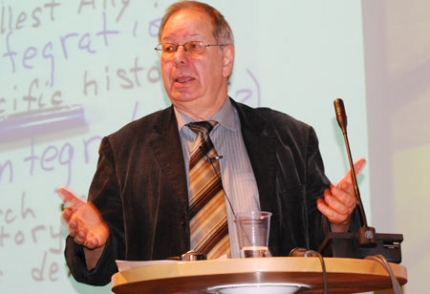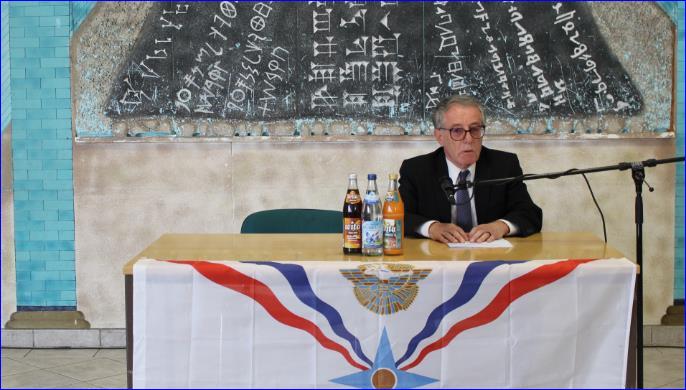By Sabri Atman
Before trying to give an answer to the above question or a number I hope the reader will pause and ask, which genocide do we mean? It is obvious to many people that the Assyrian nation went through several genocides in their history. Therefore, we need to be very specific when there is a question concerning this topic. Otherwise, the answer we give can appear to be the wrong answer.
The Assyrians were persecuted from the fall of Nineveh and from the rise of Islam. Timurlane Mongolians persecuted and converted hundreds of thousands and perhaps millions of Assyrians to Islam. In addition, the massacres of Bedir Khan Beg 1843, the genocide of 1914-18, the Simele Genocide of 1933, the ISIS genocide in 2014, are some other very painful and dark pages on the Assyrian history. These pages are continuing until today because the genocide is going on. The question that frequently is asked; how many Assyrians have lost their life? Before answering this question we should always ask: When?
It is not an easy task to give the exact numbers or statistics about what happened a hundred or hundreds of years ago and especially when we speak about events that have occurred in the Middle East. We also should keep in mind that the victim groups in general exaggerate with their numbers. However, to see other victims’ groups doing this doesn’t justify us to do the same thing because of a simple reason; two wrongs don’t make a right. More importantly, the number for itself doesn’t make genocide more important than other genocide. Whether ten thousand or a hundred thousand, genocide is genocide and all genocides are evil. It is not clear how they come to the number but the Assyrian delegations presented statistics to the Paris Peace Conference in 1919, on the number of the Assyrian victims during the genocide of 1914-1918. First, we need to be careful about if we present any other number that contradicts the Assyrian delegations. Importantly, we don’t want to give denialists any reason to question our credibility. However, if we present any other number then the Assyrian delegations to the Paris Peace Conference this number should be well explained and strengthened with sources. One of the questions I receive often when I give a presentation on the Assyrian genocide, by the non-Assyrian audience is; how many Assyrians used to live before the First World War?
Genocide is a crime against humanity and refers to the destruction of a group, in whole or in a significant part an ethnic, religious, racial, economic, political, or national one. Raphael Lemkin coined the term and he was forced to compromise with several actors on the concept in order for this to be ratified by the United Nations in 1948. Nowadays, there is not only one definition on this concept and many scholars include forced assimilation on this concept as well. We Assyrians lost two-thirds of our population during the First World War and go through a very painful assimilation process. We know what we are talking about.
We Assyrians talk about past genocides because it shapes our future. But more importantly, in order to prevent future genocides, we need to speak about the past genocide and draw lessons from them. Furthermore, for many of us, it is a moral obligation to ensure that past genocides are not forgotten. In addition to that, the Assyrian Genocide is an open wound because the perpetrator denies what they did against our people.
We should keep in mind that in 1915 the perpetrator did not only kill our people; they did not only take our Diyarbekir, Hakkari, Urhoy, Urmiya, Tur Abdin, and many other places from us! In 2014 they didn’t only take Mosul and Xabur from us.
They did not only destroy our language and national identity, but they also destroyed our future to be a nation in our ancient homeland. Despite all suffering; Jews, Armenians, and Greeks have their own countries. But Assyrians have nothing!
They caused us to live all around the world separated from each other. They caused us to go through a very painful assimilation process in the Diaspora. What I want to say is that many of our contemporary societal problems can be deduced from the genocide. As such, how can we forget it? Past genocides have to be known and condemned in order to prevent future genocides. And this is precisely why the Assyrian Genocide should be known and considered.
To go back to my question: When Assyrians present their case on the genocide they use different numbers. This is partly because they do not specify and reveal which genocide and from which period they are talking about. There is no general agreement about it among Assyrians, but most organizations use the number of 750,000, some others use more than 600,000. During World War I, the Assyrian delegation to the Paris Peace Conference presented the number 250,000 to the League of Nations. All these numbers are correct based on the time period. I was fortunate to discuss this matter with the late Assyrian scholar Hirmis Aboona that I met many years ago in London. He said, “it depends on which time period you are talking about. If we speak about the Assyrian victims from Timurlane to today then we should speak about millions of victims, millions that were assimilated and forced to convert to Islam.”
According to historical archives, from 1843 to 1945, the Turks, Kurds, Arabs, and Persians committed genocides against the Assyrian nation and other Christian peoples in Asia Minor [Middle East]. In these genocides, 750,000 indigenous Christian Assyrians living in their ancestral homelands (known today as the republics of Turkey, Syria, Iraq, and Iran) were burned, slaughtered, and killed systematically. Defenseless men, women, children, and the elderly became victims of these genocides.
In summary, activists and scholars agree that there were numerous genocides that make up the Assyrian Genocide.
Sabri Atman
Assyrian Genocide and Research Center




